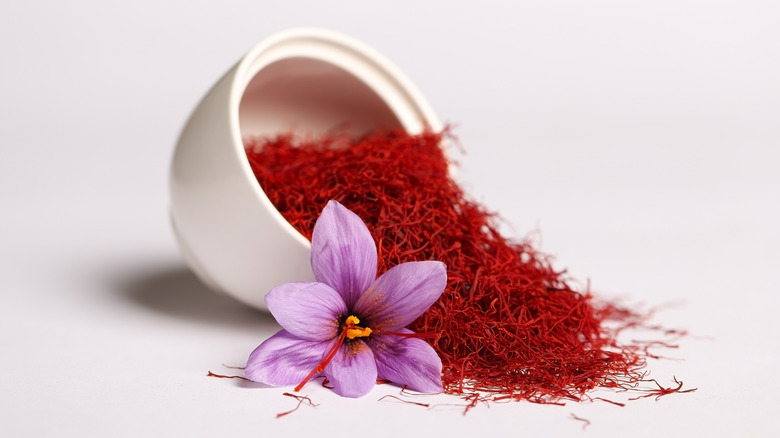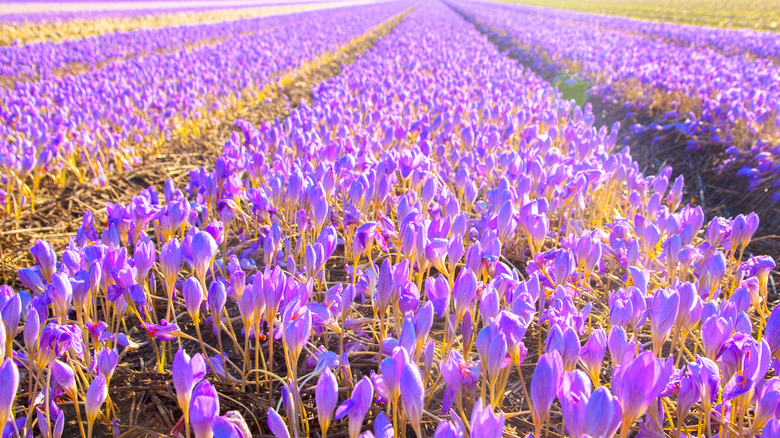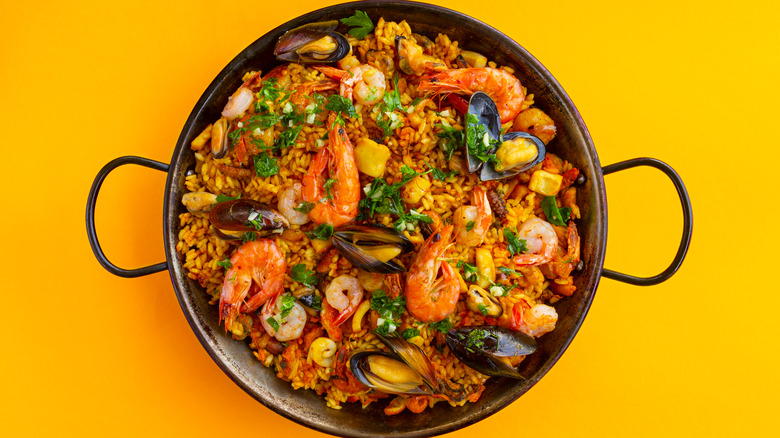The Reason Saffron Is So Expensive
The well-heeled individual can choose to display their excessive wealth in a traditional manner — with a luxury automobile, expensive homes in all the right locations, and an extensive designer wardrobe. Or they could get creative and simply sprinkle saffron on every meal. After all, anyone who can afford the liberal use of the most expensive spice in the world has some seriously deep pockets.
Surely a simple spice can't be lumped in with the likes of caviar, white truffles, and Wagyu beef? Indeed it can. With Insider revealing that in 2020 a kilogram of these red strands could cost as much as $10,000, this is not a spice for every wallet. In fact, the saffron business is so lucrative that counterfeit and adulterated versions of the spice have flooded the market. The European Institute of Innovation and Technology shares that in some cases only 10% is authentic saffron with the remainder consisting of dyed cornsilk or safflower. Clearly, many are eager to cash in on this crop's hefty price tag.
This raises the question, "Why is saffron so expensive in the first place?" The answer is quite enlightening.
Saffron farms produce relatively tiny yields
Throughout history, saffron has been used for a variety of things. National Geographic contends it once made Rome's public spaces more aromatic, was used to treat the plague, and that it became an integral ingredient for Cleopatra's baths. Now, most people see it as an expensive ingredient reserved for only the finest dining. Why does saffron bear a price tag that causes many to gasp? It turns out a lot of work goes into creating even a tiny amount of this spice.
According to Britannica, harvesters must use 75,000 flowers to produce just one pound of saffron. That equates to an expansive amount of space and labor devoted to growing a relatively tiny yield. A postdoctoral research associate at the University of Vermont told Insider that the flowers only bloom for six weeks in the fall and that they must be harvested in the early morning in order to avoid sunlight and humidity, two factors that can impact the saffron's quality. To complicate matters, each saffron crocus flower has only "three red stigmas" that make up the saffron. That's why it takes so many flowers. Clearly, with such small but costly crops, farmers must ask an exorbitant price in order to eke out a living.
How can the average American make a small amount of saffron go further? Is there something else you can use to mimic its taste?
Turmeric as a possible substitute
When preparing a traditional Spanish seafood paella, an Iranian tahchin, or a risotto Milanese, you'll likely wish you had enough authentic saffron. The New York Times shares a traditional Iranian method of stretching the use of saffron. They grind the threads and make a powder that is steeped like tea. After boiling the water, it sits for a few minutes to cool down. They add some spoonfuls of warm water to the spice to create saffron water. This can be used in a variety of recipes and stored in the fridge for up to two days.
While saffron's flavor is quite unique and impossible to replicate, turmeric or safflower are the best substitutions. Lacademie says that you can replace a large pinch of saffron with ½ teaspoon of turmeric. Just bear in mind that although these spices both add the same hue to your dish, turmeric has a much stronger flavor, so a little goes a long way. When it comes to safflower you can use a 1:1 ratio, making it extremely easy to substitute. (Plus, safflower looks just like saffron.) The one problem is that safflower has little-to-no taste, meaning that it does nothing to replicate the flavor of saffron.
Nothing can adequately fill saffron's shoes as its jaw-dropping price isn't the only thing that makes it unique. If you must have its authentic flavor, you've been warned. It may make a significant dent in your bank account.


